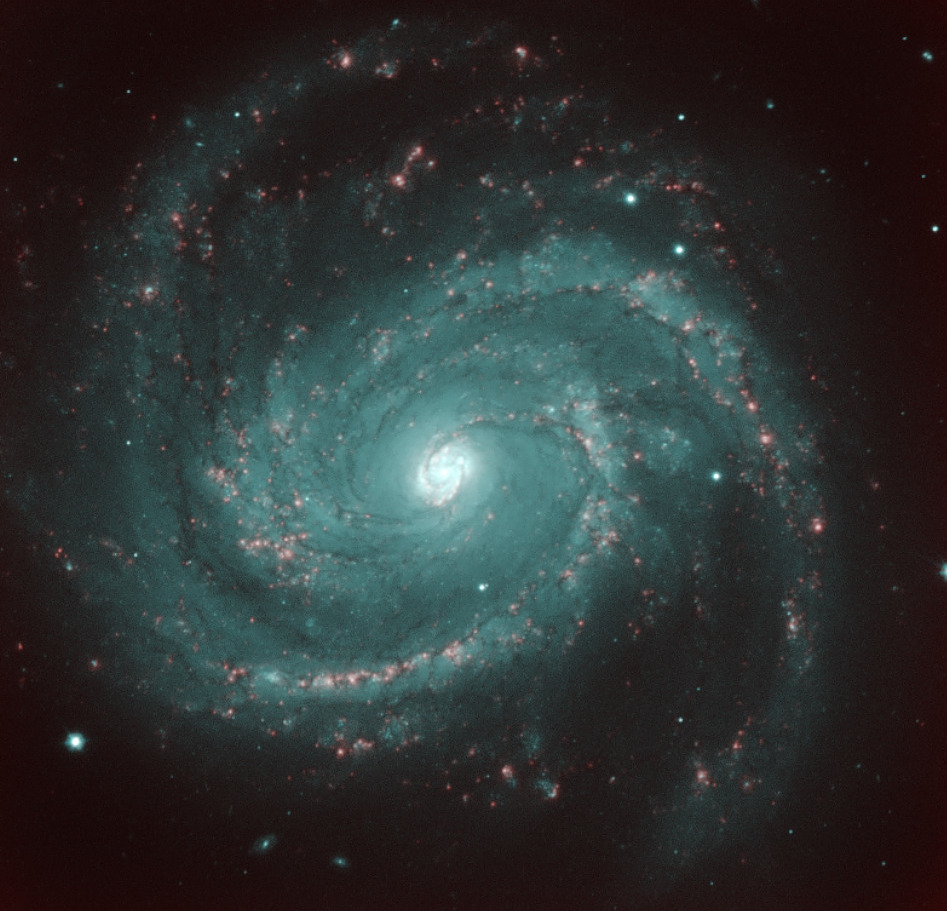An atlas of active galaxies shows that outflows are common even in the most dormant galaxies
The Institute of Astrophysics of Andalusia (IAA-CSIC) studies in depth a sample of LINERs, the least luminous type of active galaxy, and finds that half of them produce gas outflows
Galactic outflows, capable of generating large amounts of energy and transporting gas over large distances, play a fundamental role in the evolution of galaxies. In the case of active galaxies, whose brightness is attributed to the existence of a supermassive black hole surrounded by a disc of matter feeding it, it is common to observe outflows produced by the black hole. However, the properties of these phenomena, which are barely known in less bright active galaxies, have yet to be characterised in detail. A study by researchers at the Institute of Astrophysics of Andalusia (IAA-CSIC) has published the most complete atlas of outflows in a type of low-power active galaxies that are the most abundant in the local universe.
“It is believed that all galaxies with an active nucleus at their centre generate the presence of so-called outflows, which are nothing more than dust and gas from the host galaxy that are expelled outwards at high velocities –says Laura Hermosa, the IAA-CSIC researcher leading the study–. Until now it had not been checked whether the existence of these outflows was also common in the less active nuclei that exist, the so-called LINERs.

LINERs, an acronym for "low ionisation nuclear emission line region", account for about one third of the galaxies in our environment. Their nuclei emit a specific type of radiation (the emission of weakly ionised or neutral atoms), and their energy shows a higher intensity than galaxies whose energy comes only from stars, but lower than those in which supermassive black holes are very actively consuming material.
In the latter, galactic outflows generate feedback processes that can even stop star formation, but until now it was not even known how frequent they are in LINER galaxies. This could be due to the fact that the particularities of these objects prevent their formation or to an observation bias: these phenomena tend to be found in very powerful active nuclei, where they are easily identified, since the fluxes usually show a scale proportional to the luminosity of the nucleus. active.
"In this work we have imaged ionised gas from a sample of seventy LINER galaxies, making it the largest sample of such studies to date. The outflows are distinguished in the images as extended emission emerging from the galactic nucleus. By combining the information from the images with existing spectroscopic information in the literature, we have quantified for the first time how common outflows are in this type of active galaxy and found that approximately 50% of all LINERs in the local universe show galactic outflows", says Laura Hermosa (IAA-CSIC).
The work has also made it possible to divide the sample into four different types of outflow configurations depending on how the emission is distributed: "core-halo" for unresolved nuclear emission, "disc" for structures similar to small spiral arms or discs, "bubble" for biconical, filamentary or bubble-shaped structures emerging from the core that the team identifies as superoutflow candidates, and "dusty" when large amounts of dust obscure the nuclear emission.
"Moreover, combining the optical information with X-rays, we see a correlation between both emissions for 60% of the sample, which indicates that both emissions are generated in the same spatial region of active galaxies (LINER type), as has already been seen in other higher luminosity galaxies", concludes Laura Hermosa (IAA-CSIC).

L. Hermosa Muñoz et al "A search for ionised gas outflows in an H alpha imaging atlas of nearby LINERs". Astronomy & Astrophysics, 2022 https://doi.org/10.1051/0004-6361/202142629
Instituto de Astrofísica de Andalucía (IAA-CSIC)
Unidad de Divulgación y Comunicación
Silbia López de Lacalle - sll[arroba]iaa.es - 958230676
https://www.iaa.csic.es
https://divulgacion.iaa.csic.es

